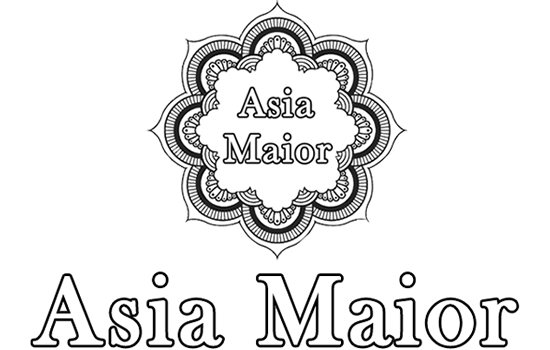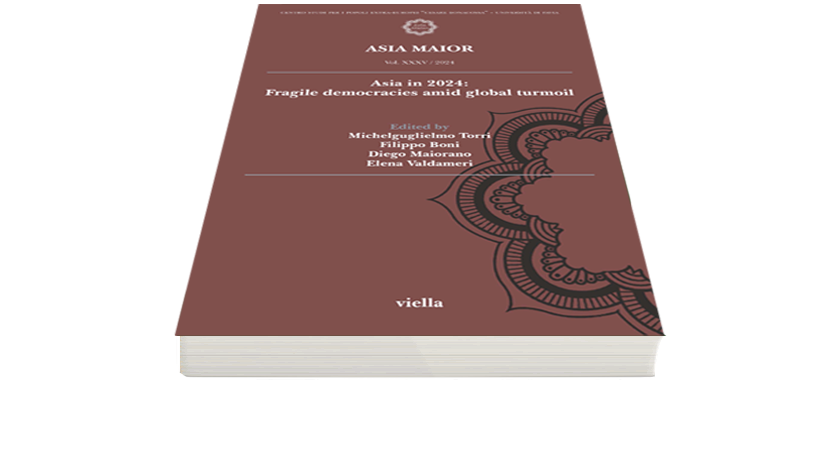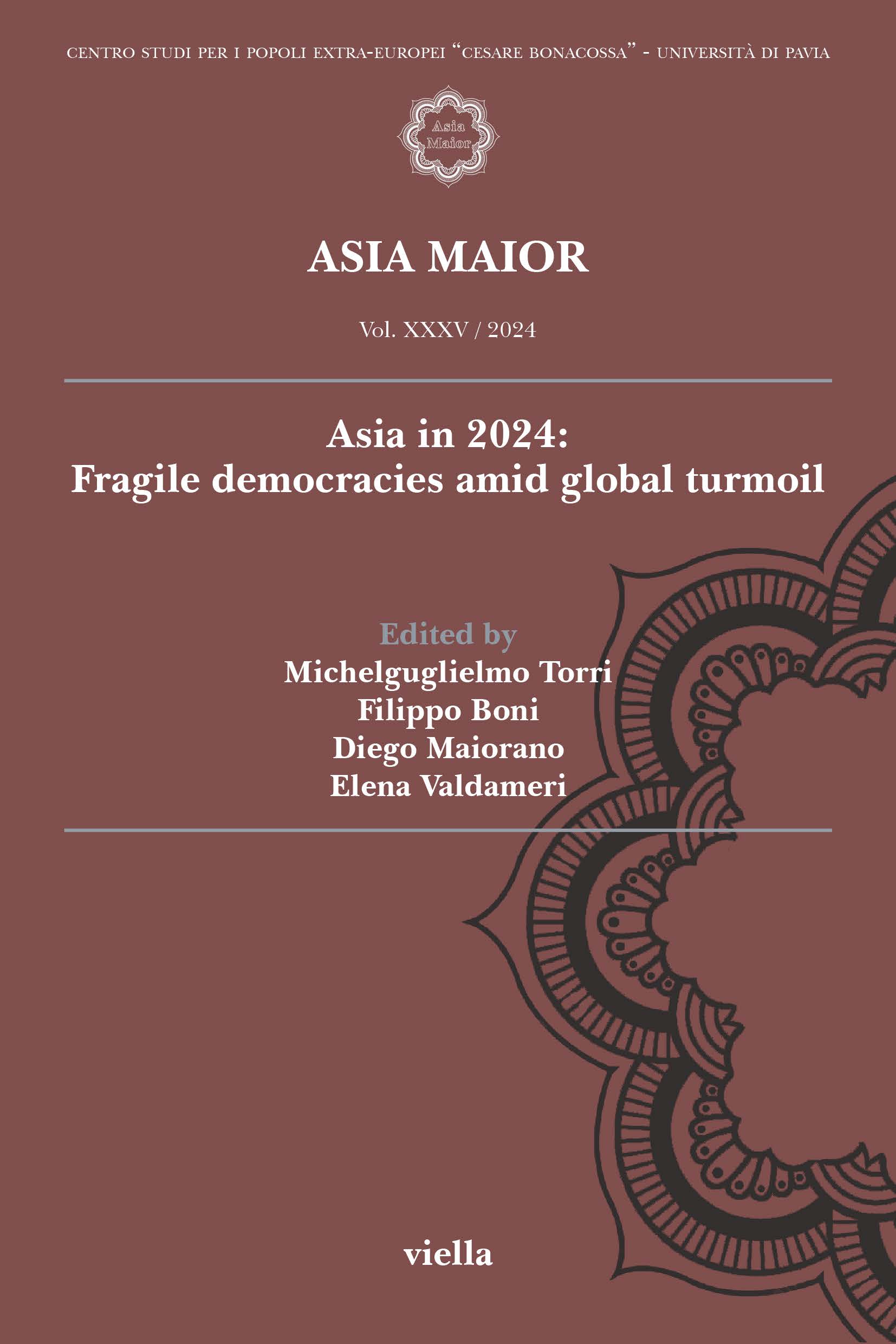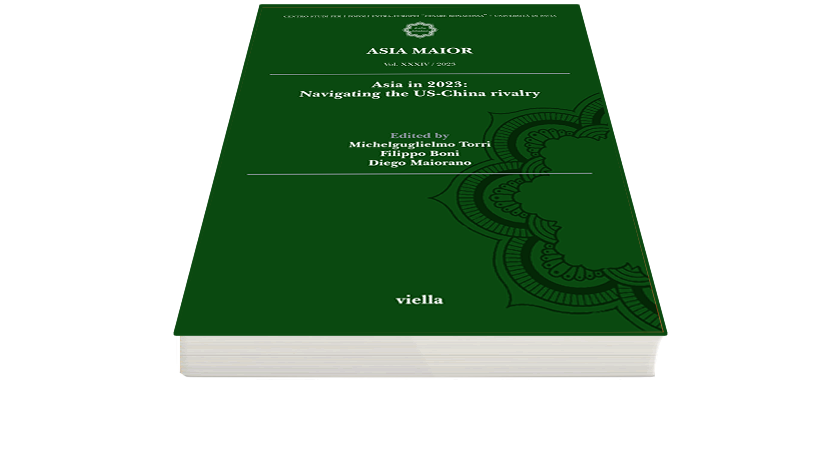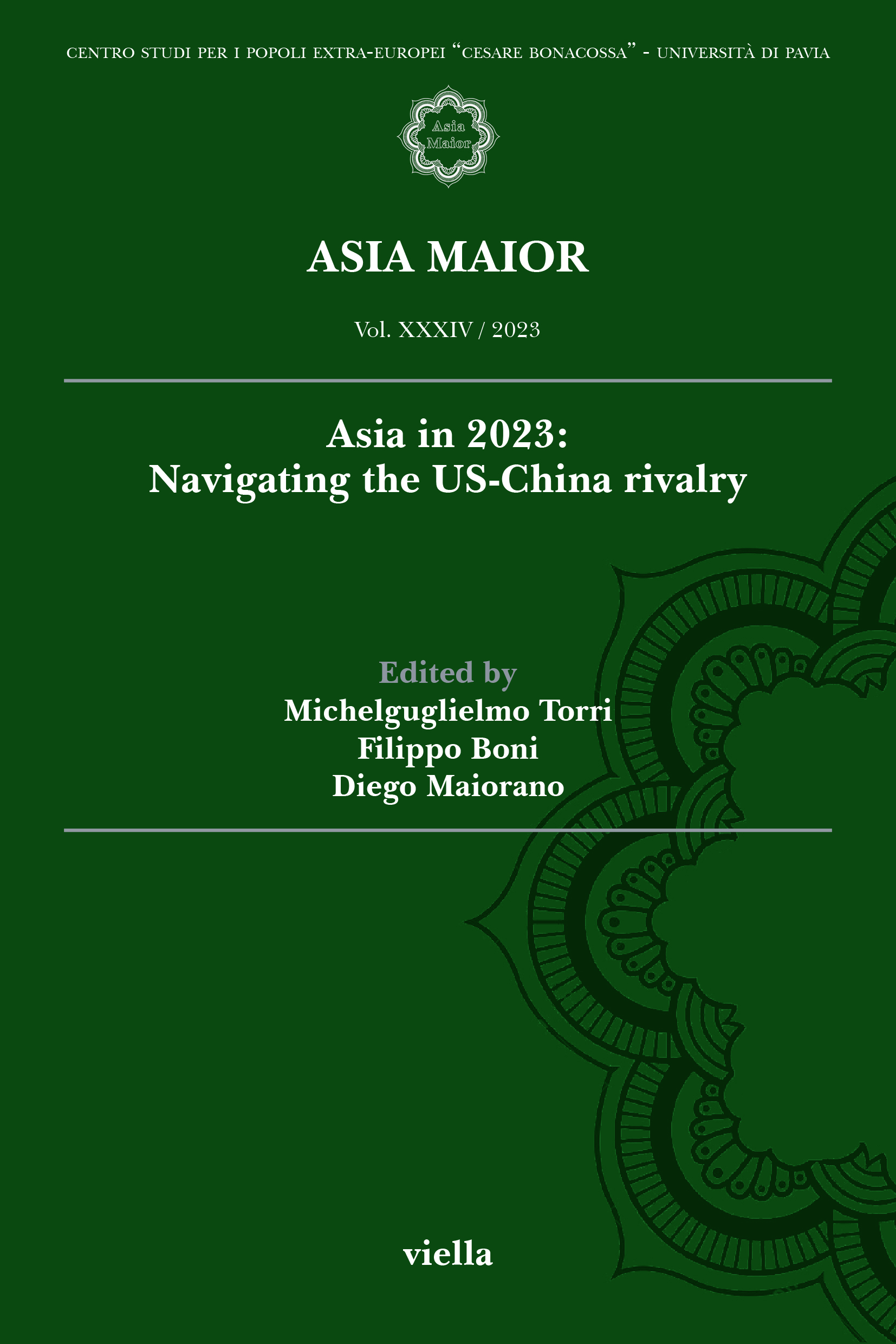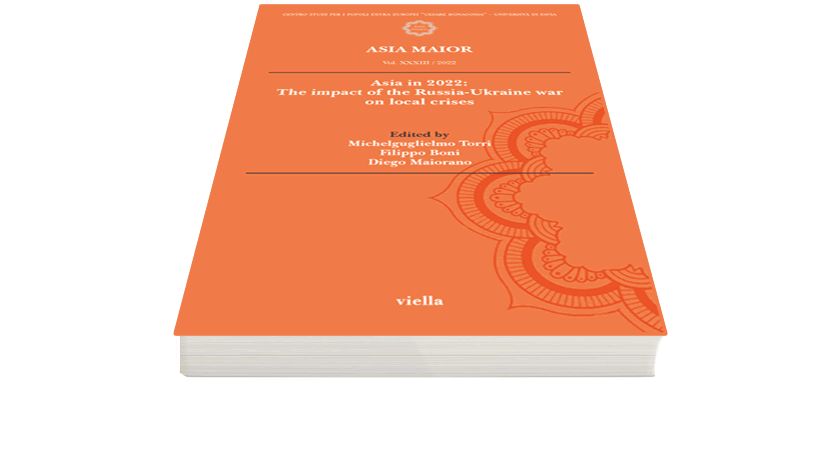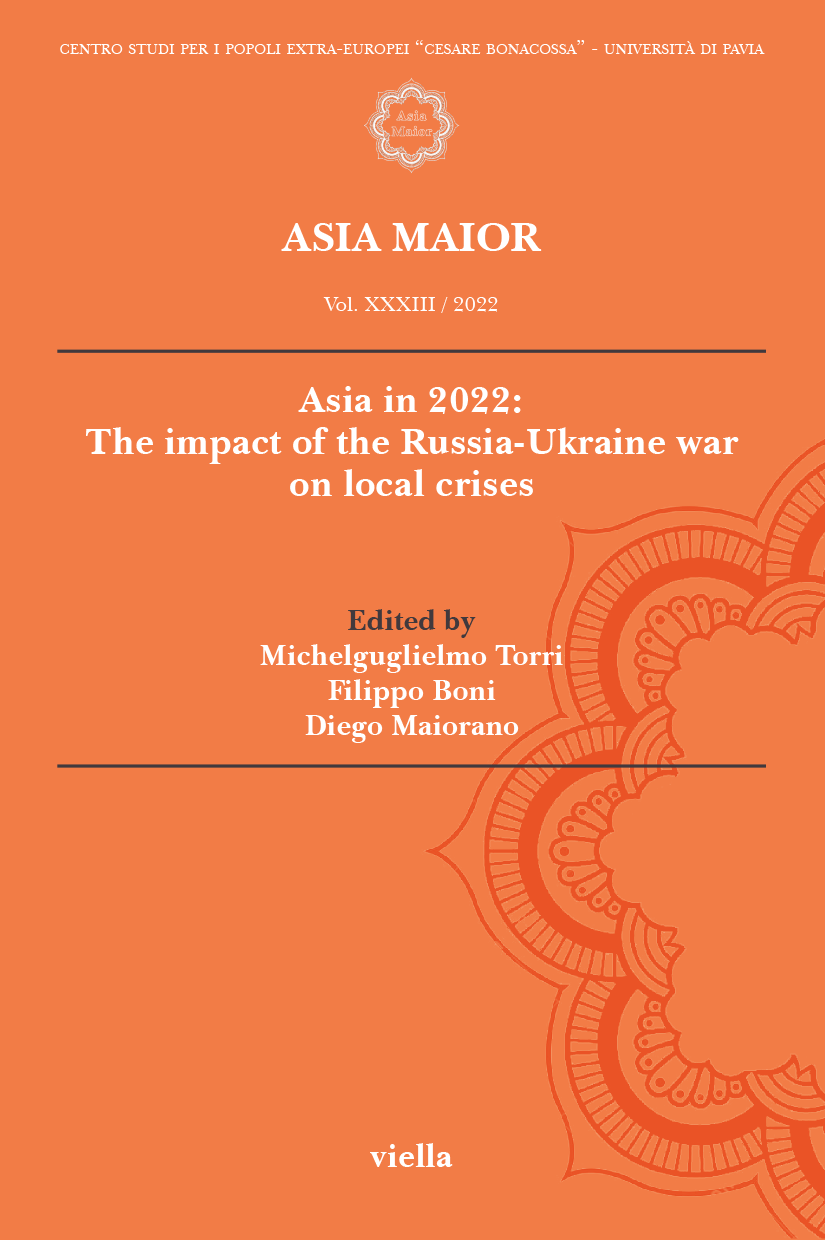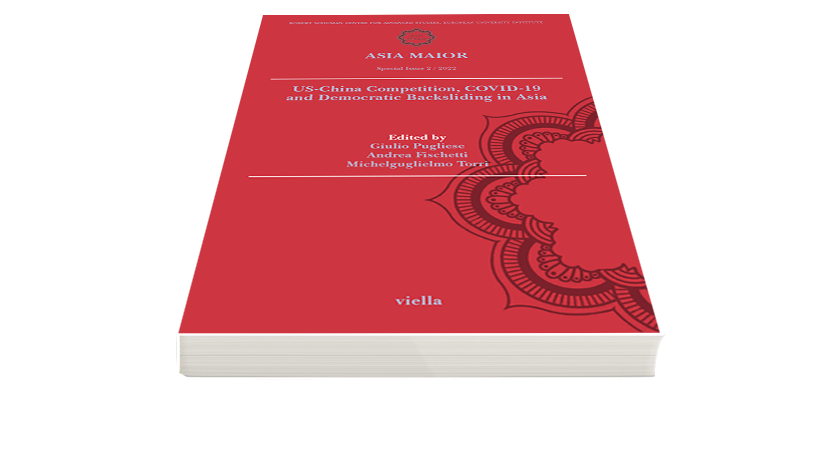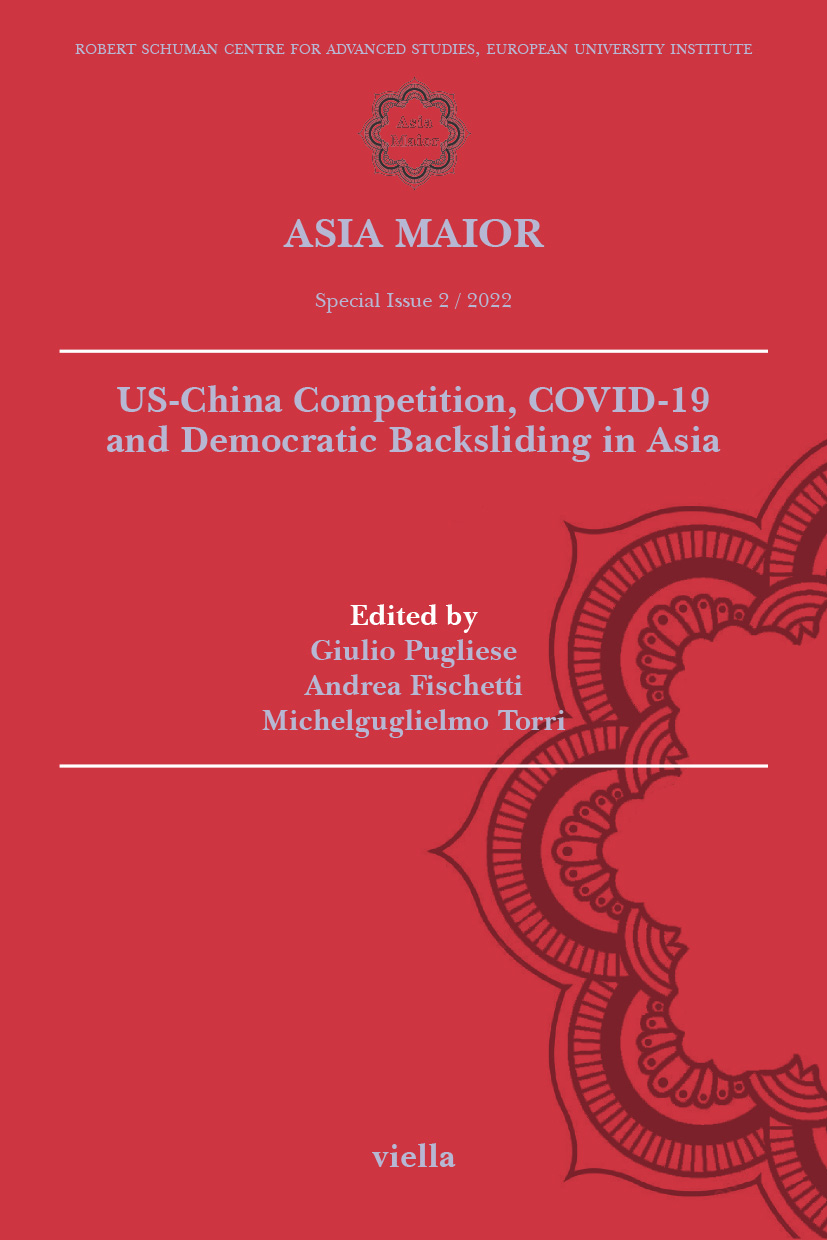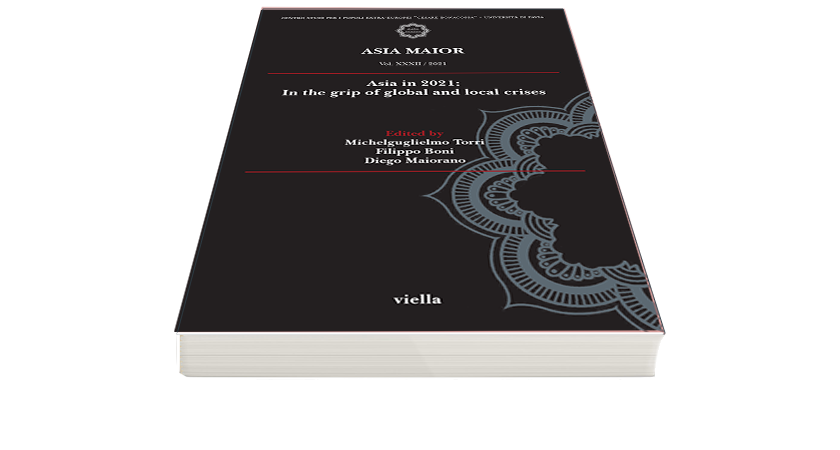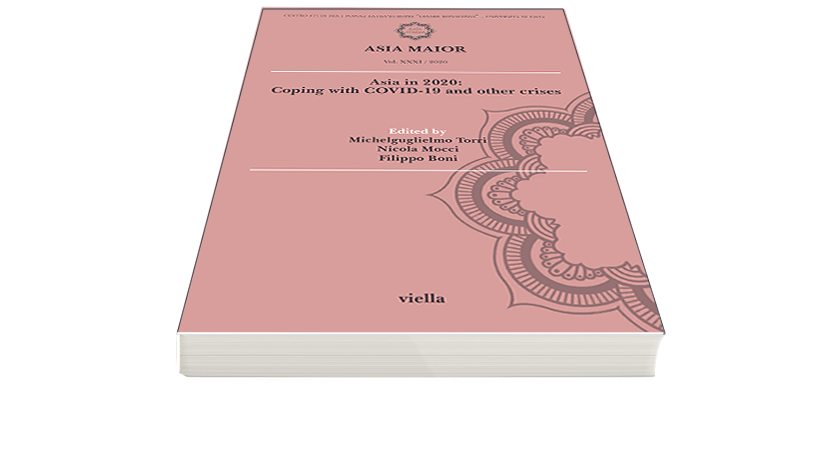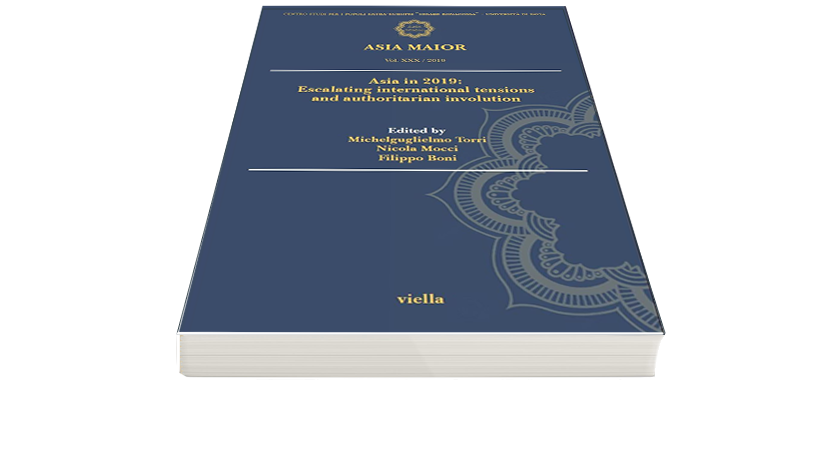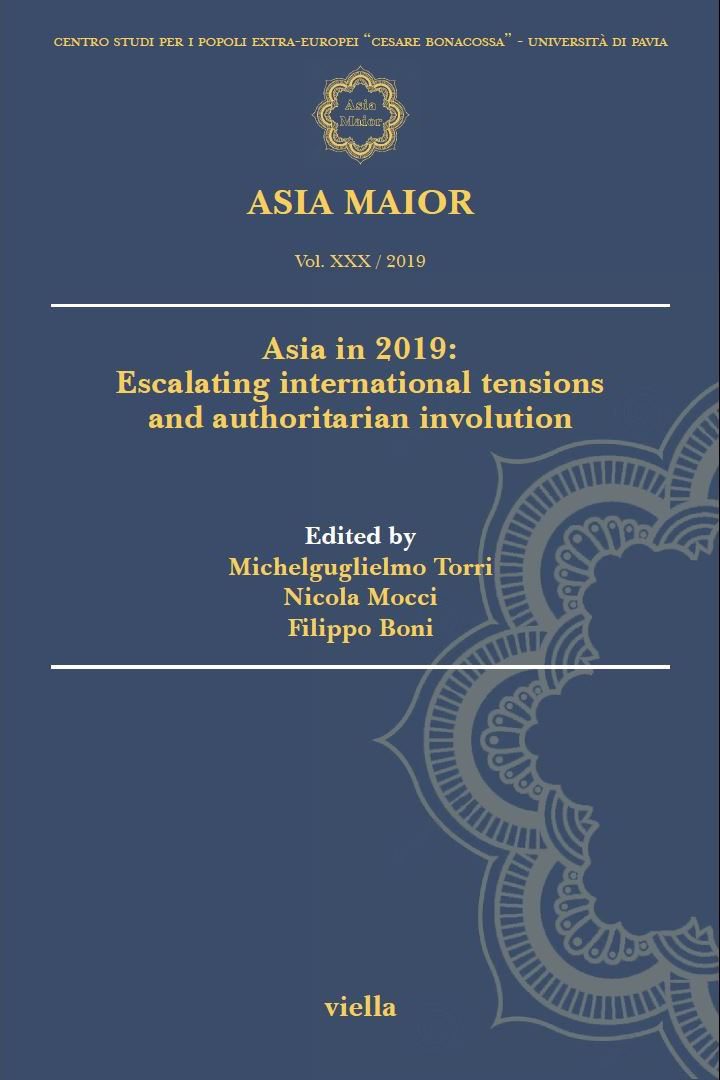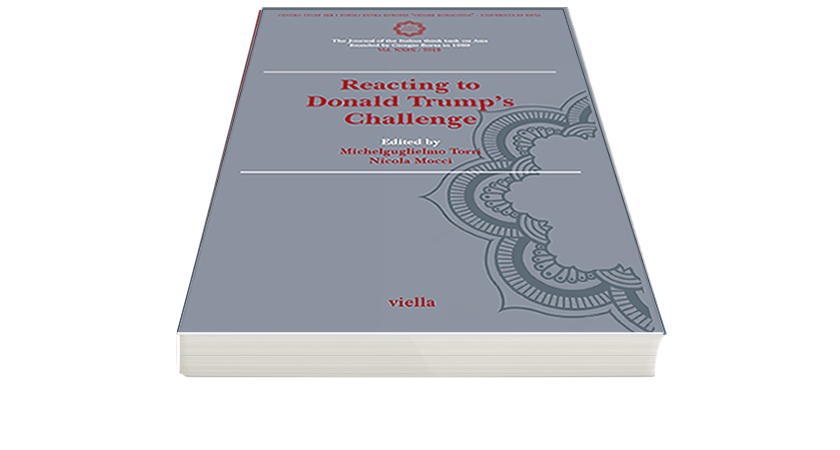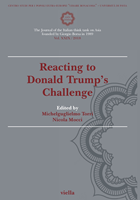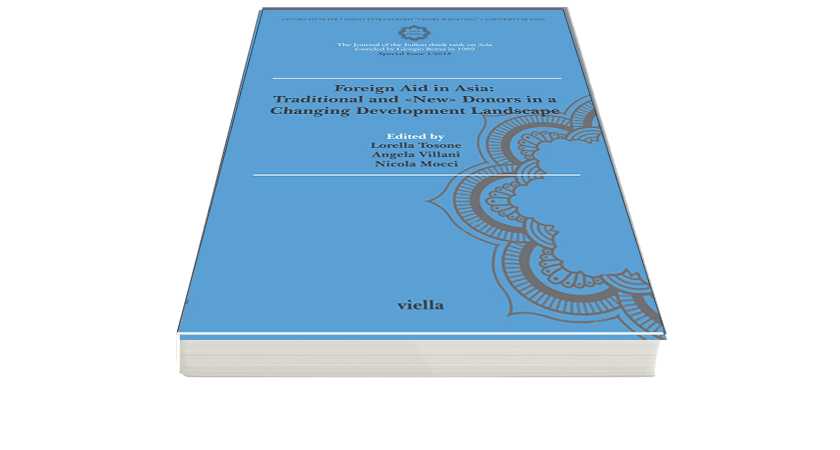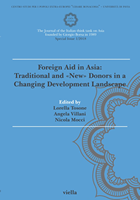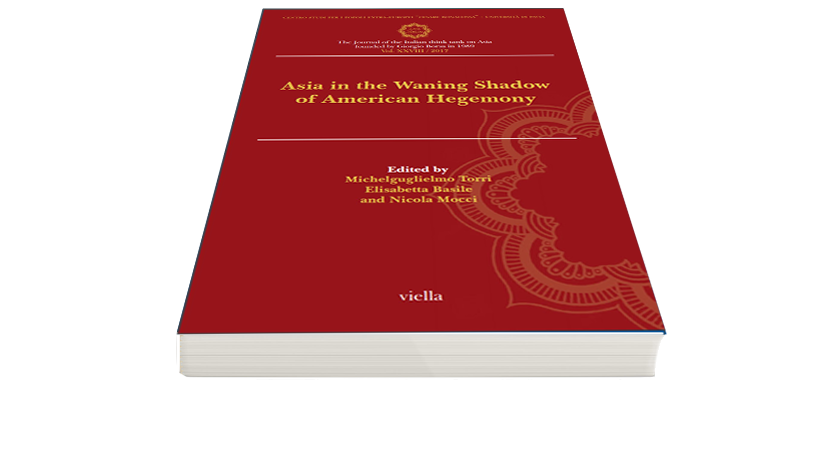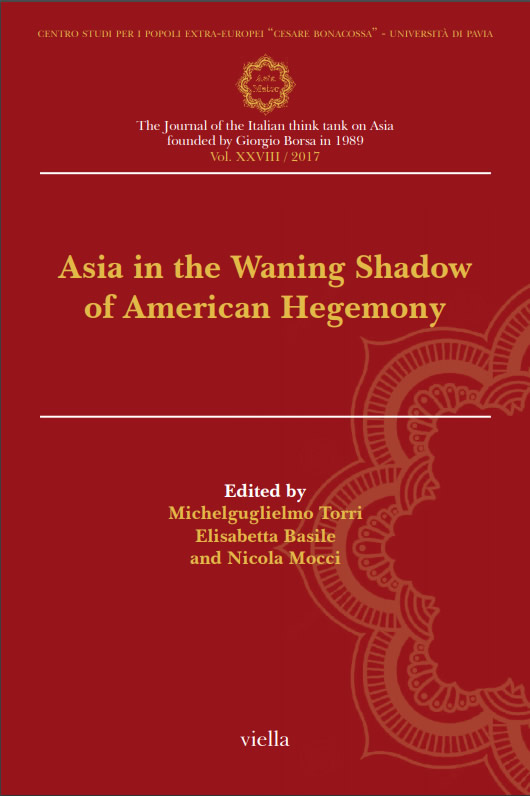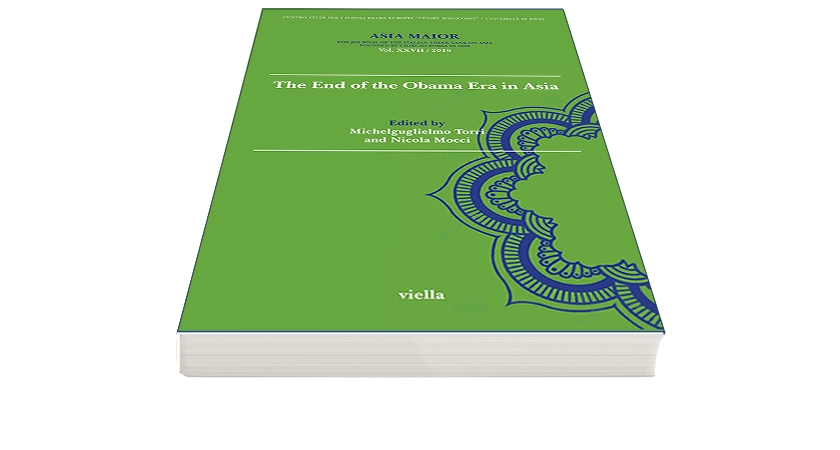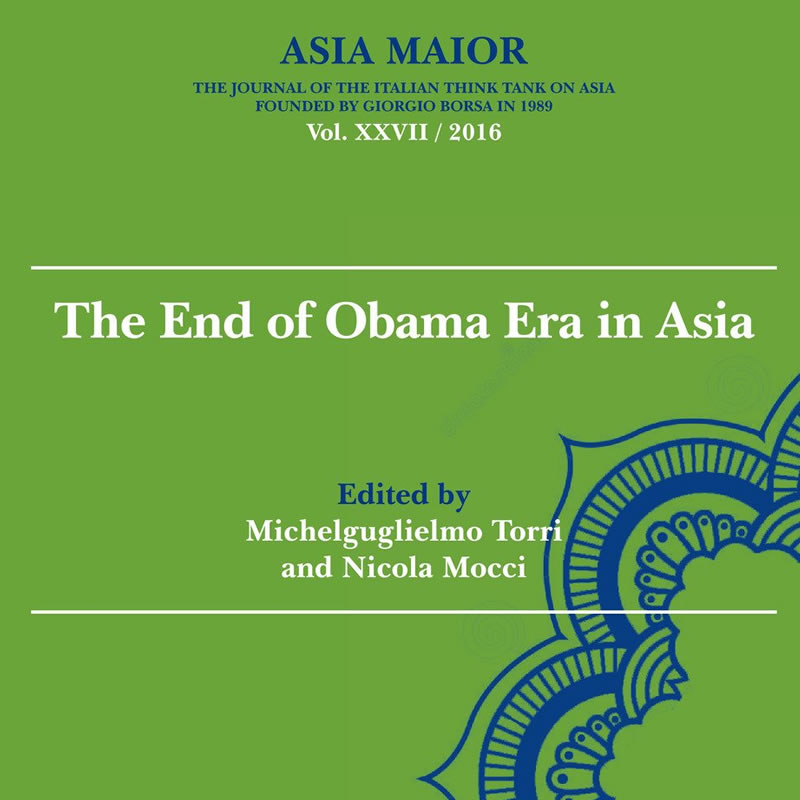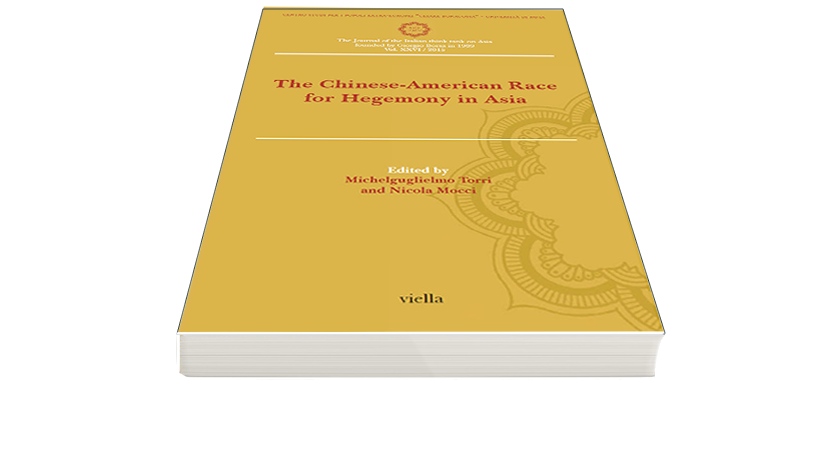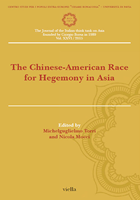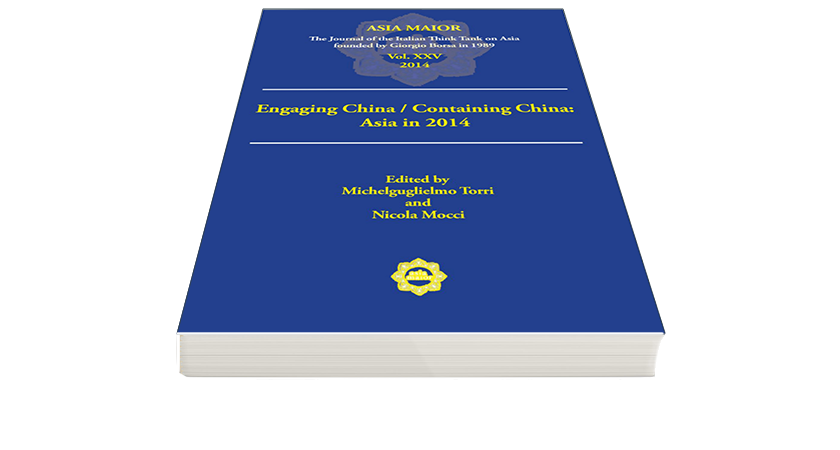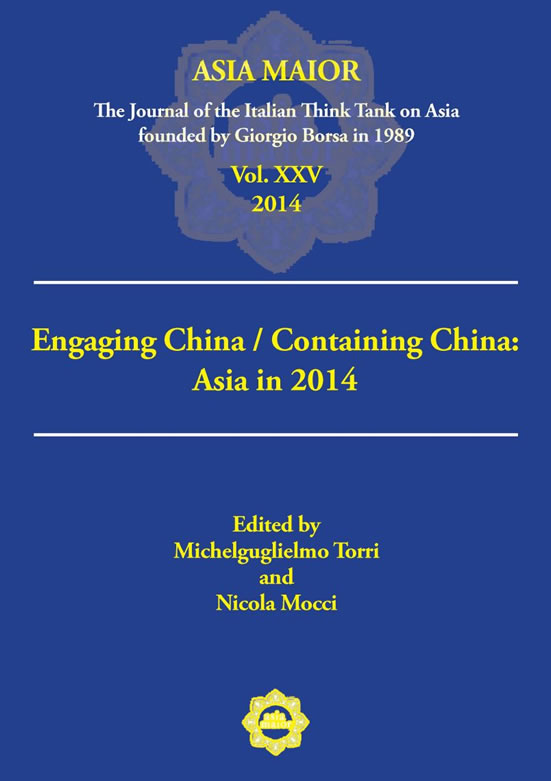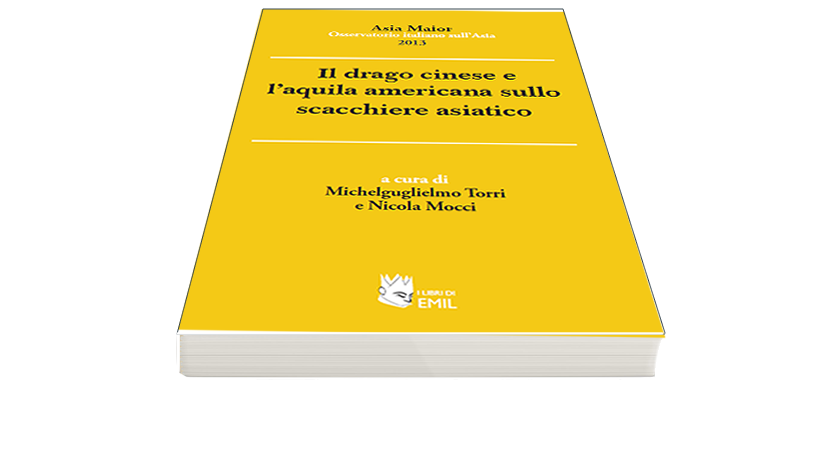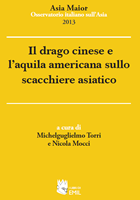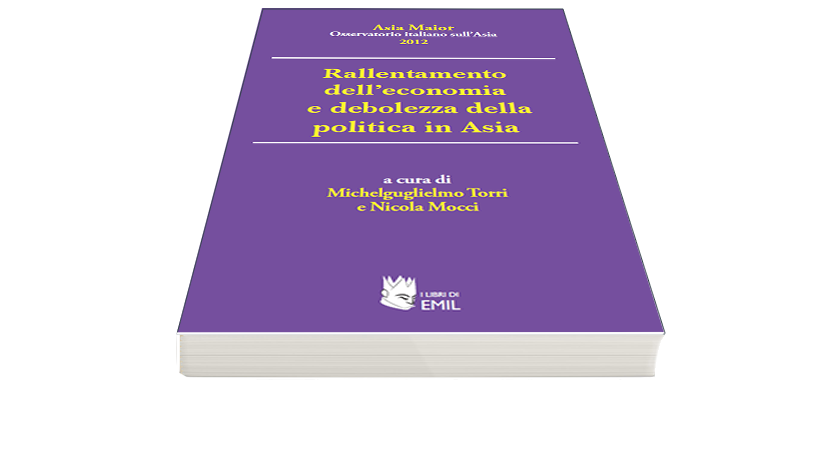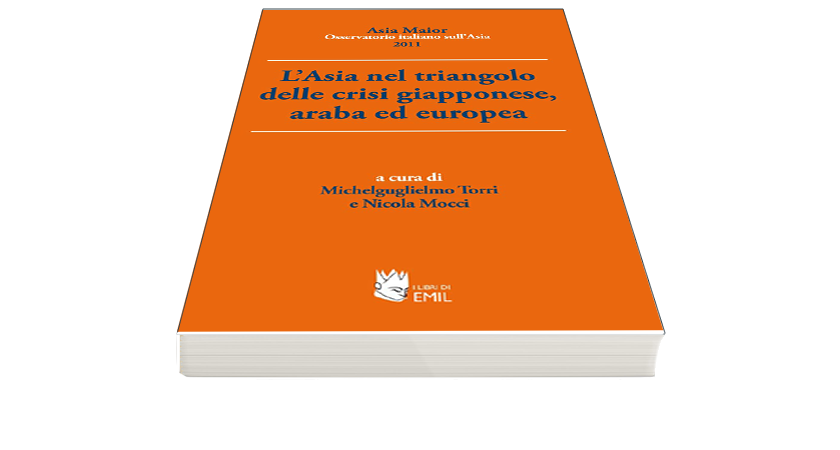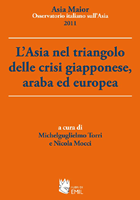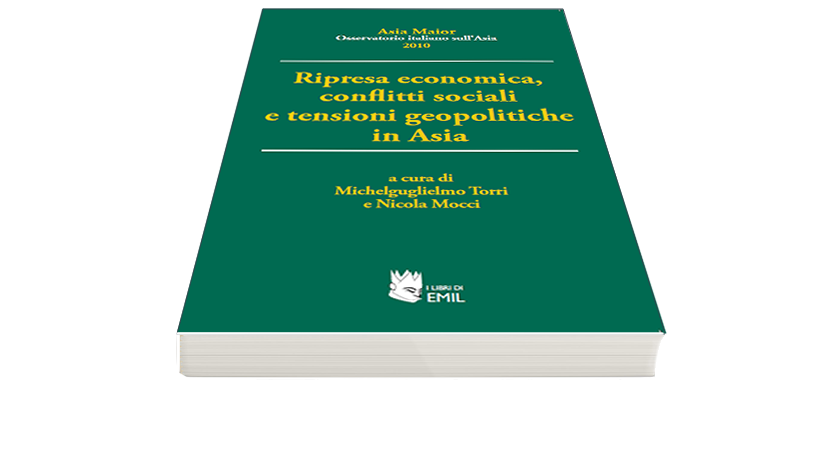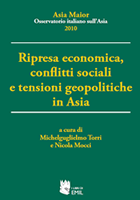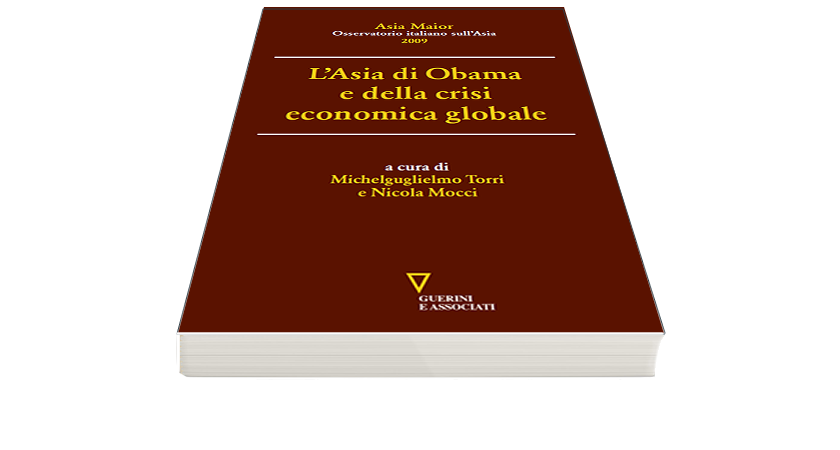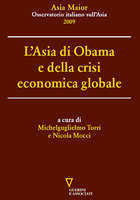India 2024: Authoritarianism checked, then reasserted
Available also in pdf – Download Pdf
To understand how India’s internal politics changed in 2024, it is necessary to consider diverse topics. They include the main aspects of the authoritarian system that Prime Minister Narendra Modi had created during a decade in power, and the surprising setback that he faced at the national election in April-May despite huge unfair advantages over rival parties. His loss of a parliamentary majority at that election led some to expect that he would moderate his drive for autocratic rule and religious polarization, but that did not happen. Aspects of the economy that affected politics also mattered: economic growth, widening inequality and persistent poverty, the government’s surprisingly unhelpful treatment of the middle classes, and its welfare provisions. India under Modi suffered deeply embarrassing downgrades to dismal places in numerous international rankings. Its efforts to address this problem bore little fruit. A fundamental social change – the refusal of so called «lower» castes to accept caste hierarchies – had long been seen at the grassroots. But in 2024 it finally had an impact in national politics, to the disadvantage of Modi’s party. He had succeeded in gaining control of nearly all of India’s once-vibrant media, and they helped to promote his extravagant personality cult. Partly as a result of it, he relaxed into a self-satisfied complacency which led him to believe and to announce that he is of divine origin. This monumental complacency also led to three startling excesses that have damaged India’s international ties – especially with the West and most crucially with the U.S. as Donald Trump takes power.
Keywords – General election; de-institutionalisation; authoritarianism; personal rule; personality cult; divinity; complacent excesses.
1. Modi’s drive for authoritarian control and religious polarization
Between 2014, when he became prime minister, and early 2024, Narendra Modi had made great progress in promoting religious polarization – leading a hard-line Hindu nationalist assault to demonise and brutalise minorities, especially India’s 172 million Muslims. That effort continued during the national election campaign in April and May 2024 when Modi and others made much use of anti-Muslim rhetoric. He had also made great strides in radically centralising power and in hollowing out democratic institutions in order to impose one-man control of the political system.
The only institutions that escaped his effort at disempowerment and control were the prime minister’s office (PMO) and eleven investigative agencies. They were kept strong but were flagrantly misused to mount raids and probes, often on dubious charges, to intimidate or subdue actors in government institutions and in civil society, the media, etc. – to bring them to heel. The aim here was to create an authoritarian government dominated by one man exercising personal rule.
The list of institutions that were hollowed out and controlled is long. They included India’s central bank, the election commission, the central information commission, the national statistical organisation, universities, research centres, the comptroller and auditor general’s office, the offices of speaker in both houses of parliament, state governors in the federal system, the federal system itself [Kailash 2021, 5 March], etc.
No significant power centre was omitted from Modi’s drive for top-down control. And very prominently, parliament suffered. As early as 2015, deep anxiety was evident even among members of parliament from the Prime Minister’s own Bharatiya Janata Party (BJP) because no consultation was undertaken by Modi. An economist who had advised the BJP told an eminent journalist of his surprise at the amount of «hatred» privately expressed towards Modi by several party leaders.1 During his first decade in power, numerous bills were rammed through parliament without time being allowed for scrutiny or discussion. By 2019, this disempowering had gone so far that one opposition legislator asked «Are we delivering pizzas or passing legislation?» [PTI 2019, 31 July].
Even cabinet ministers were starved of influence amid Modi’s radical centralising. They learned what their policies were from their civil servants who were told by the prime minister’s office (PMO). This led to serious delays.
With ministers interminably waiting for instructions from the PMO and unwilling to stick their neck out, decisions are taking much longer. According to sources in the PMO the highest number of files pending has gone up from 1,500 in Manmohan Singh’s tenure (before 2014) to 6,000. ‘The Prime Minister, being a control freak and travel freak at the same time, compounds the problem’, says a former cabinet secretary [Srivastava 2022, 5 February].
The firm control over cabinet ministers from on high may have diminished a little over the last ten years, but Modi’s soaring personality cult (discussed below) has ensured that the top-down grip remains tight.
2. A surprise result of the national election, and Modi’s uncompromising response
In April and May, a national election was held for a new parliament. It was not a fair election. The ruling BJP had vastly more money to spend than all other parties put together. But that was not enough. The bank accounts for the Congress Party, the BJP’s main rival, were frozen. The leader of another prominent rival party was jailed on dubious charges. Modi had gained full control of the election commission which is supposed to ensure fairness. It helped him. On 110 occasions, it took no action when his words – religiously polarising dog whistles and blatant remarks – violated its model code of conduct. Modi also controlled most print, television and online news outlets.
He and his party entered the campaign in high spirits, hoping that his consecration of the Ram temple at Ayodhya on 22 January would provide an electoral boost. He asked voters to give him 400 seats in a house of 543 – even more than had been won in his thumping victories of 2014 and 2019. Other BJP leaders explained that 400 would enable the new government to change India’s constitution.
But when the votes were counted, the result came as a shock. Despite all of its unfair advantages, Modi’s party won only 240 seats – embarrassingly short of a majority of 272. It was only able to form a government by relying on two regional parties which were its allies. Modi’s personal vote share in his Varanasi constituency fell from 63.62% in 2019 to 54.2%.
This confirmed what has long been known: Indian voters are not mindless sheep who are easily led. They have thrown out ruling parties at roughly 70% of national and state elections since 1977 – internationally, a very high rejection rate. In this election, despite the huge unfair advantages enjoyed by his party, it suffered a reversal.
The causes of this outcome are complex. Most opposition parties coalesced in an imperfect but reasonably successful alliance to prevent the fragmentation of anti-BJP votes. Reliable opinion surveys revealed widespread discontent over inflation and the lack of employment opportunities about which Modi had long made what Indians call «tall promises». The use of anti-Muslim rhetoric failed to generate the expected levels of support.
Many activists in the ruling party’s hard-line Hindu nationalist sister organisation, the RSS, sat out the campaign. They were unhappy with Modi for two reasons. His drive for one-man government and his personality cult offended them because they had always believed that their organisation and their cause should take precedence over individual leaders. They also objected to Modi’s tendency to seize power by any means. After he had lost state elections, he had repeatedly used threats and inducements to persuade legislators from other parties to defect to the BJP, so that he welcomed turncoats with no commitment to the Hindu nationalism that was so dear to the RSS.
The BJP also suffered from a decline in support from disadvantaged groups – most crucially, the Scheduled Castes (ex-untouchables) and the Scheduled Tribes (tribal people or adivasis) – see Table 1 below. Many of them were alarmed by the prospect of a large enough majority for the BJP to alter the constitution in ways that could lead to the weakening or removal of reservations for them in educational institutions and government jobs. By loudly appealing for 400 seats, Modi had blundered.
Some expected that the disappointing election result would make Modi less aggressive in pursuing autocratic rule by consulting the two regional parties on which he depends for his majority, and by toning down Hindu extremism because those two parties have cultivated support from minority voters. He offered financial concessions to those parties, but little else changed.
Soon after the election, he intentionally outraged opposition parties by re-nominating as speaker of the lower house a man who had suspended 110 of their legislators in a single day in the previous parliament. New harsh criminal laws were proposed which broadened the definition of terrorism and, after claiming to abolish sedition, retained it under a different name – and increased punishments to life sentences.
A tough new broadcasting bill was introduced to strengthen the government’s grip on digital media. Modi unilaterally lifted the ban on government employees joining the BJP’s sister organisation, the RSS. Loud protests from the opposition claimed that this would let RSS members assume powerful roles, and that it was a threat to reservations for disadvantaged castes. But the change survived. Without consulting allies, Modi announced changes in a Waqf bill to take a tough line on provisions for Muslims, to end what he called the «appeasement» of the minorities.
He also vowed to persist with forceful «anti-corruption» efforts, which meant the persistence of widespread raids and arrests by investigative agencies on questionable pretexts. There are eleven such agencies, including the Income Tax Department, the Intelligence Bureau, the Central Bureau of Investigation, and the Finance Ministry’s Enforcement Directorate. They have been brazenly misused against opposition politicians, media outlets, India’s once hugely constructive civil society organisations (including two Nobel Peace Prize winners), universities and research centres (starting with vengeful attacks on the best), and independent voices. After the election, his right-hand man, Amit Shah, drove the message home: Modi would have total power to act without consulting allied parties [Raman 2024, 30 September].
The only significant change was an effort to repair the damage done among Scheduled Caste and Scheduled Tribe voters by his call for a huge majority. New initiatives to benefit these groups were developed. Analyses of the election result indicated that their anxiety over reservations (see section VI) – along with rising inequality and the severe shortage of jobs – outweighed religious polarization which Modi had stressed during the campaign. But after the election, Modi, Shah and other BJP leaders continued to promote religious intolerance and the brutalization of the vast Muslim minority [Singh 2024, 5 December].
The incendiary BJP Chief Minister of Uttar Pradesh, warned repeatedly – and preposterously – that if Hindus were not united, they would be slaughtered. He promised that more Hindu temples would be built on the sites of mosques. He and some other BJP state-level leaders continued, without due process, using bulldozers to destroy the homes and businesses of Muslims whom he called the «mafia». This triggered an objection from a UN Special Rapporteur in a submission to the Supreme Court. One reporter wrote that «Anti-Muslim Crimes (Have) Become the Norm» [Puniyani 2024, 11 September]. Another noted «continuing – even growing – impunity and confidence» by violent Hindu extremists [Halarnkar 2024, 2 September]. A fresh spate of beatings and murders of people, mainly Muslims, occurred based on inaccurate allegations that they were in possession of beef [DHNS 2024, 6 September].
Opposition parties had gained enough new seats in parliament to increase pressure on the government, but Modi continued to treat them with disdain. As in the previous parliament, he refused to answer a single question that they raised. He continued to show contempt for opposition parties – evident in Amit Shah’s description of them as snakes, rats, cats and dogs. Modi re-tweeted a BJP leader’s post that included opposition leader Rahul Gandhi in a list of «traitors» and said that he has the «brains of a child». He falsely accused the Congress Party of «cheating» and «embezzling» – and so the caustic diatribes continued [Ghose 2024, 6 August].
3. The economy: growth, inequality, poverty and the middle class
3.1. Concealing data to control the political narrative
As we turn to India’s economy, it is important to note a problem with discussions of it – and of much else. The Modi government has gone to great lengths to conceal or to avoid collecting important data.
This is apparent on many fronts. The most startling is the refusal to conduct a census. For 140 years, Indian governments have held censuses every decade during years ending in the number one. A census was due in 2021, but none occurred. This was perhaps understandable because of the COVID crisis, but none has taken place in the following three years.
That was no isolated example. 16 datasets covering key sectors have not been made available. The sectors include police organisations, law and justice, defence, railways, food security, consumer expenditure, the household consumption survey, youth affairs, educational institutions, livestock, chemicals and fertilisers, and civil aviation [Salve 2024, 31 December]. With concealment on so many fronts, one witty Congress Party leader, Rajeev Gowda, said that Modi’s NDA (National Democratic Alliance) was actually a «No Data Available» regime.
It clearly preferred not to reveal – or even to collect – information. It allowed vacancies to proliferate in many national and state-level information commissions, until the Supreme Court ruled that they must be filled [Singh 2024, 5 December].
The government also manipulates to its advantage the few key sources of data that are available. In 2018, it stopped publishing the National Sample Survey until it could change the way statistics are calculated to paint a happier picture. It also takes advantage of gaps in the available data to make false claims about analysts’ findings. An important example was the assertion, re-tweeted 2,500 times, that the International Monetary Fund had projected India as the fastest growing economy on earth. This was untrue. It was based on old IMF data [Mehta 2020, 29 August].
3.2. Growth
A more detailed analysis of India’s economy appears elsewhere in this volume, but certain aspects of it have implications for politics, the main concern here. Growth rates are disputed, but by international standards, the economy grew in 2024 at a respectable rate. However, there were also worrying signs. Between July and September, it slipped from pace of the 8% of gross domestic product that it reached in much of 2023 to a two year low of 5.4% [Dhoot 2024, 29 November].
Other things also gave cause for concern. Foreign direct investment had been declining for years, and in 2024 it fell by 64%. In October, India experienced the world’s greatest exodus of foreign portfolio investment. This has continued: foreign investors withdrew $ 8.3 billion in January 2025. A Bloomberg report found that manufacturing output had declined sharply to 2.2% from 14.3% the previous year – which was seen by one analyst as «dismal» and «grim» [Narendra 2024, 5 December]. A Wall Street Journal study blamed that poor performance on excessive regulations and red tape [Li and Mandavia 2024, 23 November]. This contradicted Modi’s much hyped claims to have improved the ease of doing business.
We often hear that the economy that has emerged under Modi is a partnership of the government and big business. But the state has retained immense powers over the economy, so that what has emerged is a somewhat liberalised but far from neoliberal economic order, [Manor 2020, 31 October]. The Modi government holds the upper hand in that relationship and uses it to dominate corporate leaders. That is clear from statements by two iconic captains of industry that the authorities have subjected big business to an «environment of fear», and from the comment by a third that corporations are being treated like «pariahs»[The Wire Staff 2019, 25 December].
Modi’s drive for utter dominance on every front is apparent even in ties to such leaders. He and Amit Shah are equal opportunity authoritarians. No one is excluded from their drive for control. What we see here is not classic form of crony capitalism. Their cultivation of «fear» indicates that they are not seeking alliances with all – or many – corporate leaders.
3.3. Inequality
During Modi’s first decade in power, inequality soared. One analysis drawing on the work of Thomas Piketty’s World Inequality Laboratory stated that the economic order has become «more unequal than the British Raj» [Maya and Kumar 2024, 28 October]. Prabhat Patnaik notes that the World Inequality Database shows inequality to be at its worst in 100 years [Dasgupta 2024, 13 November].
3.4. Poverty
Analyses of poverty are complex, in part because large numbers of people fall into and out of poverty all the time [Desai et al. 2024]. But it is fair to say that economic growth, which in recent times has greatly benefited rich people, has left poorer groups struggling – as the section above on inequality indicates. The Global Hunger Index [DHNS 2024, 20 October] ranked India much lower than all of its neighbours except Pakistan – at 105th among 127 countries. The Modi government disputed these findings, but the Index was developed from its own official statistics. A Bloomberg report found signs of «desperation» among lower income groups [Mukherjee 2024, 11 December]. It added that, as in 2018-19, India’s policy makers were not facing up to the problem and taking action to tackle it. Instead, they were «tinkering».
200 million Indians were found to be undernourished, despite growth. One alarming aspect of this was the high level of child stunting – low height for age. The damage done to the bodies and brains of children who suffer from stunting as a result of malnutrition during their first five years is permanent – it cannot be repaired later in life. These incapacities prove costly to those who suffer them and to the good of the nation. A study covering 2019-2022 found that 36% of children in India suffer from stunting – higher than the 34% in sub-Saharan Africa [The Lancet 2019, 1 December]. This is a shameful indicator of the toll of increasing inequality amid economic growth.
3.5. The strange inattention to the middle classes
The increasing inequality under Modi has also left the middle classes «reeling from income stagnation». A «demand slump among them has recently become worse, reaching levels “not seen in a long time”». An industrialist spoke of the «shrinking middle class» [Venu 2024, 27 October]. Tax rates paid by the middle classes have not been adjusted for inflation, which worsens their situation [Mukherjee 2024, 11 December]. Growth had greatly benefited the rich, but the middle classes, once Modi’s bed rock supporters, had been disregarded.
This might appear to be a risky gamble, but at the national election, middle class voters largely continued to support the BJP – in part because communal polarization had taken a strong hold among them. And since the election, the government has taken some steps to benefit them.
4. Welfare provisions: encouraging passivity among recipients
The Modi government has provided poor – and indeed non-poor – people with abundant benefits. Among these are five kilograms of food grains per month given to no less than 800 million recipients. The government may have done this because it is aware of something important that its suppression of data has concealed: that despite economic growth, inequality has increased sharply so that large numbers of citizens have made few or no gains. But it has also seen these provisions as a way of attracting votes. They often entail the use of IT systems to send cash payments direct to the bank accounts of recipients [Aiyar and Sircar 2024, 30 November].
This approach to welfare has important political implications. These payments flow directly from the Prime Minister himself to beneficiaries, without middle men. Modi has seized upon this by energetically claiming personal credit, to inspire gratitude among recipients to him – enhancing his personality cult and his drive for one-man government. He stresses that he is preventing intermediaries from corruptly skimming off percentages, and from favouring only some of those who need the benefits. But many, perhaps most of the middlemen who have been cut out of the system are members of his own party. So, this aspect of his relentless drive for personal dominance has irritated BJP activists (former middlemen) and weakened the BJP’s organisation, just as he has undermined a huge array of other institutions within the democratic order. This reminds us of how thoroughly he has pursued de-institutionalisation, a central theme in his politics.
This approach to welfare provisions has often, although not always, paid handsome dividends at election time. Many state governments, including some headed by opposition parties, have adopted it [Kailash 2024, 7 June]. But in numerous cases, this has led to a near-crippling of governments’ ability to fund basic services and badly needed infrastructure projects [see for example Ranade 2024, 27 November].
Another implication of this strategy is crucial. It becomes clear when we contrast this system to the approach used by the previous national government between 2004 and 2014, which was led by the Congress Party. Its most important pro-poor programme (there were several others) was the Mahatma Gandhi National Rural Employment Guarantee Act (MGNREGA). It gave every rural household the right to demand and receive up to 100 days work, manual labour, per year on development projects. It was shrewdly designed with strong transparency mechanisms to prevent corruption. Wages were paid not through intermediaries but directly via an IT system into workers’ bank accounts which were opened anew on an enormous scale. Vast numbers of poor rural dwellers found work under this programme so that it became the world’s largest poverty initiative.
A key feature of the MGNREGA was that it sought to make poor villagers active participants in public affairs at the local level. They had to take the initiative in seeking work, and in performing labour. It drew many of those people – actively – into the public sphere for the first time. That was especially true of rural women, many of whom had seldom left the household in the past. And in recent years, women have outnumbered men among labourers in the programme.
A major aim of the MGNREGA as it activated poor villagers, was to strengthen their «political capacity». That consists of four things: poor people’s political awareness, their confidence as political actors, their political skills, and their connections to other poor villagers and to allies among the non-poor [Jenkins and Manor 2017]. The contrast with Modi’s approach to welfare provision is stark. He seeks to make recipients passive and to allow their political capacity to atrophy, while the MGNREGA seeks the opposite: to make them more active with greater political capacity.
5. A fruitless attempt to respond to India’s dismal global rankings
The Modi government was acutely embarrassed by its extremely low rankings in over 30 global indices published by reputable international organisations. These dismal assessments covered a broad diversity of important issues. They included hunger, poverty, health, media freedom, education, the condition of democracy, etc.
The government felt compelled to react, and it focused on public relations rather than policy change. It formed a special unit to monitor indices, and to pursue responses designed by the prime minister’s office. It instructed at least 19 ministries to tackle 30 international indices: by lobbying some of the organisations that produced them, by «massaging» data to challenge the methods of some, and by developing ‘rigged’ home-grown indices as alternatives [Jalihal 2024, 28 December].
This was no easy task. Some of the organisations that needed to be challenged were dear to the hearts of many in the Modi government – for example, the World Economic Forum whose Global Gender Gap Index placed India 129th among 146 countries. Another, the Global Hunger Index, showed that 67.1% of infants are anaemic and 35.5% are stunted – which implies irreparable damaged to the bodies and brains of young children. India’s rank had fallen to 94th out of 111 countries. On investigation, the index was found to be based on the government’s own statistics. Nor did these efforts to develop counter-arguments always bear fruit. When the Ministry of Law and Justice was asked to study the decline in rankings for democracy and the rule of law, the ministry actually endorsed them! [Jalihal 2024, 29 December] The government’s revisionist exercise has fallen flat in the international arena, but domestically, it may have been of modest help to the ruling party’s propaganda machine.
6. Deep social changes at the local level finally emerge in higher level politics
In the mid-1990s, scholars who studied rural society saw something remarkable. Dalits (Scheduled Castes, ex-untouchables) and other supposedly «lower» castes were increasingly refusing to accept caste hierarchy in villages. And they were increasingly open about it. This was one of the most important changes to occur since Indian independence. Caste hierarchy had been the central element in the way that rural society had worked for generations – and two-thirds of Indians still live in villages.
Very little attention has been paid to the wider implications of this crucial change, so this writer analysed them in nine varied Indian regions. Complex implications emerged at the village level. Most notably, Dalits and other disadvantaged groups developed increasing awareness, assertiveness and skills to operate in the public sphere. But for years, it was impossible to connect those local changes to politics at higher levels [Manor 2015; Jodhka and Manor 2018].
But at the 2024 election, those things came into play in national politics. Modi’s major blunder, his call for a huge BJP majority of 400 seats, alarmed Dalits and other disadvantaged groups. They feared that this might give him the power to weaken or remove reservations for those groups in education and government posts. Many Dalits and other disadvantaged voters shifted their support from the BJP to rival parties, often to the alliance led by the Congress Party. See the results in parliamentary seats reserved for Dalit candidates (because they are numerically strong there).
|
Table 1: Change in seats reserved for Dalits won at the last two national elections |
||
|
2019 |
2024 |
|
|
Congress Party |
6 |
20 |
|
Congress and its alliance partners |
9 |
33 |
|
BJP |
46 |
29 |
|
BJP and its NDA allies |
54 |
39 |
|
Table compiled by the author on the basis of various sources (Note that the figure of nine seats for Congress and allies in 2019 includes reserved seats for Scheduled Tribes, and is a disputed, provisional number.) |
||
Similar anxieties among adivasi (Scheduled Tribe) voters also led to declining support for the BJP and its allies [Attri et al. 2024, 13 August]. (Note that the figure of nine seats for Congress and allies in 2019 includes reserved seats for Scheduled Tribes, and is a disputed, provisional number.) Taken together, these two trends provide an important part of the explanation for the BJP’s loss of its majority in parliament – a decline from 303 seats (of 543) in 2019 to 240 in 2024. As a result, after the election, BJP leaders concluded that efforts were needed to regain support from these two groups [Deb 2024, 21 August]. It was a rare post-election change in Modi’s approach.
7. The media, the personality cult and in 2024, Modi’s divinity
7.1. Subduing the media
Before Modi took power in 2014, in this writer’s view, India’s print and electronic media had greater analytical substance than any of their counterparts in the Commonwealth except Britain – greater than in Canada, Australia and New Zealand. But during his decade in power, he has turned nearly all of the print, television and online media into subservient cheerleaders for his authoritarian approach and for religious polarization. He has systematically reduced India’s media to the rank of 159 of 180 in Reporters Without Borders’ Press Freedom Index – lower than Yemen, Pakistan, Rwanda, Libya, Hong Kong and Zimbabwe. It noted that in India «press freedom is in crisis». The government has «extraordinary power to control the media, censor news and silence critics». It added that
India is one of the world’s most dangerous countries for the media. Journalists who are critical of the government are routinely subjected to online harassment, intimidation, threats and physical attacks, as well as criminal prosecutions and arbitrary arrests…Terrifying coordinated campaigns of hatred and calls for murder arc inducted on social media… [Reporters Without Borders 2024].
How has this been accomplished? Three things explain it: carrots, sticks and surveillance.
Most media outlets are owned by corporate magnates who have many other enterprises. In India’s only partially liberalized economy, the government retains formidable approval powers that can greatly help or hinder those undertakings. If media outlets offer servile praise to the regime and its leader, their broader portfolio of businesses are rewarded – carrots.
But there are also sticks. If a media outlet airs reports that are critical of the authorities, they pay a heavy price. The central government’s investigative agencies may threaten or undertake raids on the offices and even the homes of editors and media executives – seizing computers, arresting key personnel, etc. Opportunities for corporate owners’ other enterprises dry up. Those investigators often have no evidence to back up their charges of fraud, income tax offences, foreign currency manipulations or whatever. But the damage is usually painful enough to secure compliance.
And then there is surveillance. Media houses also know that their reports are constantly and thoroughly assessed. The government has a very large team of monitors who sift through media content, and the BJP also has a sizeable team doing the same thing. They contact and warn media executives or editors when they discover coverage that is negative or just even-handed. They express appreciation to media leaders for favourable reports on the government, and especially on the Prime Minister – sometimes urging that the reports be aired again. They may supply media outlets with flattering photos of Modi for publication. These tactics have proved very effective.
7.2. Building Modi’s personality cult
The fawning media have enabled Modi to get away with numerous constitutional outrages – by ignoring them. One especially glaring example illustrates this trend. In India’s parliamentary system, the prime minister is the head of government, but the head of state is the president who symbolises national unity – like Italy’s president or Britain’s monarch. But in his drive for personal rule and iconic status, Modi has often side-lined the President. The most spectacular example came at the opening of a new parliament building, the key part of a redesign of New Delhi which the Prime Minister intended to signal a new era in India’s political history. In a breath-taking violation of propriety, the President was not invited. Modi presided. The subservient media raised no questions, and merely celebrated.
This was clearly part of a massive effort to enhance the extravagant personality cult that had been constructed around Modi. It has taken many forms. Media outlets feel compelled to refer to him not as Mr Modi but as «PM Modi», a mode of address never applied to his predecessors. Numerous government programmes have the prefix «PM» (for «prime minister» or its Hindi equivalent, «pradhan mantri») attached to their titles – to stress his personal role in their creation. Photos of his face appear on vaccination certificates and packages containing many items provided by the government, like cement. Civil servants in government headquarters at the district (county) level have been scolded by ministers for failing to display Modi’s photo outside their offices. A new 132,000 seat cricket stadium was first named after Sardar Vallabhbhai Patel, an iconic leader of the Congress-led struggle for independence whom the BJP lionises to de-emphasise the role of Jawaharlal Nehru. But it was soon renamed the Narendra Modi stadium. Outside many railway stations and even military installations, the government has placed life-size cut-out photos of the Prime Minister to enable people to take selfies alongside him. His galloping narcissism has no limits.
7.3. The cult reaches new heights: Modi’s divinity
Over time, the Prime Minister’s personality cult has soared breathtakingly. In 2016, a senior BJP leader stated that Modi was «God’s gift to India». That man was then made India’s vice president. Since sycophancy paid dividends, the claims escalated. Another leader said that he is superhuman, «a repository of unending powers», with «traces» of God in him. But that was not enough. Another said that he was indeed a god. But then another found that inadequate. Modi was the leader of the gods.
Then jaws dropped as the Prime Minister revealed during the election campaign that he had become «increasingly convinced» that he had not been born biologically. His origins were divine: he had been sent to earth to do God’s will by cleansing India of evils. He explained that he was persuaded by two plain facts. His stupendous energy can only have originated from on high. And his accomplishments could only be seen as products of divya shakti, divine power.
Does he actually believe this? To answer this question, we must consider two things. The first was his timing of the announcement. If this was an election ploy, a distraction from what polling showed were voters’ concerns – unemployment, price rises and the struggle to make a living – it had limited promise. He revealed it too late, after most votes had been cast. Even if it had been widely believed, it could not produce a thumping election victory. That suggests that he believes it.
The second thing was the manner of his announcement. When he resorts to ploys – to exciting surprises aimed at gaining an advantage – he thunders them in speeches to huge crowds. There had been plenty of these, introduced early in the long election campaign, when the BJP’s constant polling suggested that the party was performing poorly.
Modi responded in loud early speeches with harsh anti-Muslim messages – both dog whistles and many blatant comments. He said, implausibly, that the Congress manifesto had been inspired by the Muslim League – the pre-1947 party that had achieved the creation of Pakistan. He said that Congress leader Rahul Gandhi was a «fan» of Pakistan, and that if opposition parties took power, they would bulldoze the new Hindu temple at Ayodhya that Modi’s government had built.
Then his stentorian speeches became more bizarre. He accused Congress President Mallikarjun Kharge – a very sensible person, to this writer’s certain knowledge – of trying to create differences between devotees of Ram and Shiva, «to break our thousands of years of traditions». He criticised people who eat non-vegetarian food which an estimated 65% to 75% of Indians increasingly consume.
He blazed away with these outlandish comments at mass meetings, because early polling suggested that his party had done poorly in the early phases of voting, so that he badly needed a stirring message that could inspire voters. The news of his divine origin, if it was only a ploy, might have been useful. But nothing was heard of it at these early stages.
Then in the later phases, the BJP’s polling began to yield more encouraging findings. Its mood swung from anxiety to confidence that they would win a solid mandate.2 Modi relaxed into complacency and only then did he reveal his divinity not before a mass meeting but quietly, in interviews with fawning journalists. By then, he thought that needed no new ploy or gimmick to win votes. The quiet, complacent manner of that announcement – like its timing – indicates that this was no ploy. He really believes that he is divine.
8. Complacency leads to continuing excesses
The same monumental complacency, the belief that he could get away with anything seen in Modi’s claim to divine origin, persuaded him that the brutalities committed against minorities and independent voices could continue despite his party’s disappointing election performance. Details on these outrages over the years can be found elsewhere [Manor 2021, 2 March], but the problem gained new urgency in late 2024.
It emerged most vividly in an open letter to the Prime Minister by 17 immensely eminent retired civil servants, diplomats and a former Vice Chief of the Army Staff. These are men who quietly enjoy the esteem of a grateful nation. They are extremely reluctant to comment on public controversies. Their acute anguish was apparent from the fact that they were risking retaliation from a vengeful government. They pleaded with Modi to curb the flood of outrages during 2024.
They called attention to the «extreme anxiety and insecurity» felt by minorities. Actions against those vulnerable groups had always occurred since Indian independence, but «the last 10 years are markedly different» because of the «clearly partisan role of many state governments…».
What started as incidents of bullying or beating up Muslim youth on charges of carrying beef, grew into lynchings of innocent people…followed by Islamophobic hate speeches with clearly genocidal intent. In the recent past there have been calls for boycotting Muslim business establishments…and unrestrained bulldozing of Muslim homes at the behest of chief ministers themselves led by a ruthless local administration [The Wire Staff, 2024, 1 December].
They added that press reports indicated that 154,000 establishments have been bulldozed, and hundreds of thousands of people have been made «homeless or bereft of their place of business. Most of these belong to Muslims».
Most recently, India had seen «unknown fringe groups demanding archaeological surveys on medieval mosques and dargahs (religious shrines) to prove that they were built over Hindu temples». One such case was especially alarming.
It appears unimaginable…that a local court should order a survey on the 12th century dargah of the Sufi Saint Khwaja Moinuddin Chisti – one of the most sacred Sufi sites in Asia not just for Muslims but for all Indians who are proud of our syncretic and pluralist traditions. The very thought that a mendicant Saint, a fakir who was an integral part of the Sufi/Bhakti movement unique to the Indian subcontinent, and a paragon of compassion, tolerance and harmony could have destroyed any temple to assert his authority, is ridiculous… An ideological assault on this uniquely syncretic site is an assault on our civilisations heritage and perverts the very idea of an inclusive India that you yourself seek to reinvigorate. [The Wire Staff 2024, 1 December]
2024 ended with no sign that Modi or his government would respond to the anxieties expressed in this letter by reining in the mayhem. His narcissistic complacency, seen in his claim to divine origin, appears to have persuaded him that he could get away with anything. Domestically, when he committed serious mistakes, his grip on the media ensured that they would cover for him, and offer him only praise. This may even have convinced that he had not actually made mistakes – that he could do no wrong. Nor was he called to account for grossly extreme actions because adulation from the media swamped criticism. This occurred even at breathtakingly crass moments.
Consider one hideous example. His key Independence Day address in 2024, he said «crimes against women are unforgiveable» and that action should be taken so that «those who commit such sins fear the consequences including hanging to death» [The Hindu Bureau 2024, 15 August]. Here he echoed his nearly identical remarks on the same occasion in 2022. But that earlier speech occurred on the same day that 11 Hindu extremists who had been given life sentences for the gang rape of a pregnant 19-year-old Muslim woman and the murder of 14 members of her family including her three-year-old daughter whose head was smashed, were released early from prison. Modi’s government approved their release. The authorization was signed by his closest associate, Home Minister Amit Shah. In a system in which power is radically centralised in the Prime Minister’s hands, Modi must have agreed to this.
9. Complacency produces three international embarrassments that damage India’s relations with the U.S. and other Western governments
As we have just noted, domestically, Modi can largely get away with such actions thanks to his control of nearly all of the media. Internationally, that is not so easy, and things became much more difficult in 2024. For years, major Western powers looked the other way at such moments because he served their purposes. The French authorities knew all about excesses within India, but in their ardent pursuit of lavish arms sales to New Delhi, they ignored them. The Biden administration was also well informed.3 It knew of Modi’s assault on democracy and human rights. It knew that India was acting as the main conduit for the sale of Russian oil to the West – and that its imports of that oil increased 50-fold during 2022 alone. It knew that India was circumventing sanctions by exporting «Common High Priority» items to Russia [Rao 2024, 20 December], and even by permitting brokers to facilitate financial transfers to Iran. But Biden was so acutely anxious for Modi to be a counterweight to China’s Xi Jinping that he also tolerated these actions.
However, in 2024 the Prime Minister’s complacency led to three excesses that became acute embarrassments. They damaged his and India’s standing on the international stage, and its relations with the West: assassination plots, a major bribery scandal, and a stinging critique of the U.S. by India’s ruling party.
9.1. Assassination plots
During 2024, in a U.S. federal court a trial began of an Indian for allegedly planning the assassination of an American citizen in New York. Very detailed evidence clearly indicates that he acted in partnership with India’s security services. The murder was bungled: the «hit man» hired was an undercover U.S. agent. But astonishingly, approval was given from supervisors in India to commit the crime on the same day that Modi was honoured with a glittering state dinner in the White House. In India’s vastly over-centralised government, it is difficult to believe that the Prime Minister did not approve this. His complacent view that he could get away with such things is astounding.
Detailed evidence also emerged in 2024 indicating that that plot was linked to the successful assassination of a Canadian citizen in that country in 2023. (The targets in both cases were advocates of a separate Sikh homeland in Punjab, a cause with such minimal support in India that one wonders why they were pursued.) Canadian police stated that «the Indian government had orchestrated homicides and extortion in Canada to intimidate Sikh separatists». India’s External Affairs Minister angrily insisted that India would never stoop to such actions, but Modi had boasted at election meetings that India would reach out and destroy its enemies in just this way.
The Canadian authorities alleged that Indian diplomats had been «directly involved in gathering detailed intelligence on Sikhs separatists who were then killed, attacked or threatened», and ordered six of them to leave the country – including the ambassador [Miller and Shih 2024, 14 October]. The implication – that the Modi government has gone to the extent of forcing diplomats to participate in such activities – inspires deep dismay within its foreign service.4
Things took a gravely troubling turn when Canadian investigators stated that the man in charge of the assassination plot was Amit Shah, India’s home minister and Modi’s right-hand man. He is by far India’s second most powerful leader, but theirs is no partnership of equals. Shah – who refers to Modi as «Saheb» (master), and who has been shown in photographs kissing Modi’s hand – is utterly subservient to his leader and informs him of everything important. This again suggests that Modi was aware of the plot. Trials in the U.S and in Canada (where Shah may even be charged) will remain an extremely serious problem for India.
9.2. A bribery scandal
In November, the U.S Department of Justice filed well documented criminal charges against Indian businessman Gautam Adani, accusing him of offering $ 265 million in bribes to state governments in India (a crime under American law). It stated that he had misled U.S. investigators and concealed information from Indian stock exchanges. It issued an arrest warrant against him. Adani denies the charges.
He had close ties to Modi from the latter’s days as chief minister of Gujarat state, and had risen from relative obscurity to become one of the world’s richest men. He had been the main Indian entrepreneur who was quite openly aided by Modi to obtain contracts across India and internationally for ports, airports, defence contracts, and an array of infrastructure projects. This occurred at a time when other corporate leaders were accusing Modi of creating an atmosphere of fear.
His indictment undermines India’s effort, in which Adani was the crucial player, to counter China’s Belt and Road Initiative. It also plainly threatens to damage Modi’s congenial relations with the American government. Those ties were damaged further by the BJP’s response to efforts by opposition parties to raise the issue in parliament. The BJP claimed implausibly that the Congress Party was colluding with anti-India forces in the U.S., including its government. This brings us to a third issue.
9.3. The BJP’s attack on the U.S. government
In early December, the BJP’s official website and BJP parliamentarians claimed that the U.S. government was behind online criticisms of Modi by the Organised Crime and Corruption Reporting Project. It is a team of investigative journalists which was partially funded by the U.S. government for analyses of countries other than India. They said that this was part of an attempt by the U.S. State Department, and the American «deep state», which included the philanthropist George Soros and (bizarrely) the Rockefeller Foundation «to destabilise India by targeting Prime Minister Modi». They added that Congress Party leader Rahul Gandhi was collaborating with this effort.
This became an international incident. The U.S. Embassy in New Delhi issued a highly unusual sharp response, complaining that India’s ruling party would make such allegations [The Wire Staff 2024, 7 December]. But BJP leaders continued hammering away with these accusations. Parliament was convulsed by the controversy as 2024 drew to a close, with Congress spokesmen alleging that the BJP had seized upon the issue to distract from the charges against Adani for bribery.
10. India-U.S. ties: Modi and Donald Trump
The BJP may have calculated that their claims would appeal to Donald Trump. Soros is a bête noire in the imaginings of the America’s extreme right. And the «deep state» in the U.S. is often criticised by President-elect Donald Trump – although even the most hysterical of the rightists have never included the Rockefeller Foundation within it.
Indian leaders have clearly stated that Trump’s return to power will improve relations between the two countries. He and Modi have had warm ties in the past. Trump admires autocratic «strongmen», and cares little for democracy and human rights. However, things may become difficult. Trump is wildly erratic and he has a strong transactional outlook. When he has the upper hand over someone, he tends to exploit it ruthlessly. As a senior Canadian analyst notes, he «smells weakness the way a shark smells blood» [Coletta 2024].
The three recent controversies noted above have made Modi and India vulnerable. The trials in the assassination cases will give Trump powerful leverage over Modi. If he asks that Amit Shah be dismissed – especially if the Canadians indict him as an alleged conspirator to murder – Modi will almost certainly refuse. Trump could then accept that, but in exchange, insist that India accept onerous demands. He may also insist that Modi distance himself from his favourite tycoon, Adani, who faces charges in U.S. courts. That would again be extremely challenging for the Prime Minister.
Another excruciating problem may arise. Trump has been consistently hostile towards the regime in Iran. The U.S Treasury has criticised India for «concealing the origin of Iranian shipments and enabling two sanctioned Iranian brokers» active in hiding this. It stated that «millions of dollars worth of Iranian petrochemical and petroleum products…were ultimately shipped to India» [U.S. Department of the Treasury 2022, 29 September]. And in 2018, India took over the operations of Chabahar Port in Iran. In May 2024, it signed an agreement with Iran to invest $ 370 million in the port, despite warnings from the U.S. State Department that this might result in sanctions. [Mollan 2024, 15 May]. Biden tolerated these things. Trump may not.
To make matters worse, Trump is preoccupied with tariffs. India’s are higher than any major economy and Trump has threatened to raise tariffs on India in response. India also has a $ 33.3 billion trade surplus with the U.S. Trump has spoken of building a tariff wall against India, and has threatened BRICS countries (including India), with 100% tariffs if they try to replace the dollar as a reserve currency [Rao 2024, 20 December].
Some Indian leaders are also encouraged that Trump is closely allied with Elon Musk (at least for the present – Trump often breaks such ties because he demands fealty). Musk has said that he hopes to meet Modi, but he is so volatile that he may not be a steady or even a rational friend. He has huge investments in China and has praised Xi Jinping. He is also prone to hysterical comments. He was once an admirer of Britain, but now believes that it is a police state which Americans should liberate, so that its Prime Minister can be jailed. He scorns all British politicians including the most right-wing, in favour of Tommy Robinson, a rightist incendiary now in prison for the fifth time for public order offences, contempt of court, etc. Musk has been denounced by French, British, German and Norwegian leaders.
Trump will also face pressure to turn against Modi from Christian evangelicals, a key part of his support base. They object to continuing attacks on their co-religionists in India that have been reported by an official U.S. agency. A letter from 400 Indian Christian leaders to Modi and India’s President asked for action after a recent «surge» in violence by Hindu extremists – as in recent years, with sadistic relish over the Christmas period. In the first eleven months of 2024, between 720 and 760 such incidents occurred [The Wire Staff 2024, 31 December].
11. A second Indian republic or a second emergency?
In summation, what do we find in India at the end of 2024? Some respected analysts have described it as a «second Indian republic» – a successor to the republic that came into being at the adoption of the constitution in 1950 [notably, Vaishnav 2025]. But is that accurate?
The word «republic» implies a political order that is well rooted in a set of robust institutions and broadly accepted norms. Among those norms is a belief in a considerable degree of equality among citizens, so that heredity cannot provide the basis for political power.
Some may argue that a republic must also have strong democratic institutions. But some countries in which democracy is constrained – even severely constrained – are commonly called republics. It is not Modi’s smothering of democracy that raises the main doubts about this being a second Indian republic. It is the severe weakening of nearly all institutions – depriving them of autonomy and power – in the interests of one-man rule. His relentless, narcissistic de-institutionalisation is what makes that term inappropriate.
De-institutionalisation has been a main theme of his time in power. We have seen the systematic hollowing out of a whole array of political institutions – except for coercive instruments like investigative agencies to enable his drive for authoritarianism. Other official institutions, non-governmental organisations and independent voices have been successfully disempowered in order to concentrate power radically to achieve one-man government, personal rule.
Another key theme has been the demonization and brutalization of India’s Muslim minority -172 million people, 14.23% of the population. They do not, to put it mildly, enjoy equality in Modi’s India. Hindu chauvinism has gained ground under Modi, but it does not yet command mass acceptance. A reliable poll in 2024 found that 69.7% of respondents agreed (fully or somewhat) that the government «must protect the interests of the minorities», and 57.2% thought that the government should give them special treatment.
Is this a political order that will endure? Such vast powers have been concentrated in one man’s hands that even his own political party has lost the considerable institutional substance which it once had [Manor 2022, 3 September]. Everything depends upon the leader to whom even the second most powerful man in the country, Amit Shah, openly offers obeisance. The Prime Minister is in good health, but he is 74 years old. He will not live forever. When he passes from the scene, there must be serious doubts about the survival of the regime that he has constructed.
If this is not a second republic, what is it? Once before, India experienced a regime in which immense powers were concentrated in the prime minister’s office in order to enable personal rule by one leader, Indira Gandhi. De–institutionalisation – in which powers and autonomy were stripped from a broad array of institutions – was a central theme. Those arrangements prevailed for most of the period from the mid-1970s and beyond the death of Mrs Gandhi until voters ousted her son and successor, Rajiv Gandhi, from power in 1989.
Radically centralised governance prevailed throughout most of that period, but it was most vividly apparent during the emergency (1975-1977) that Mrs Gandhi imposed. It is more accurate to describe the regime today not as India’s second republic, but as its second emergency. No formal declaration of a state of emergency has been made under Modi as it was under Indira Gandhi. But his carefully orchestrated, thorough subversion of the democratic system has gone further than hers did.
After 1989, the grossly over-centralised system crumbled. Institutions that had been starved of power and autonomy, but which continued to exist, reasserted themselves as massive powers flowed away from the prime minister’s office. State governments and the federal system were also re-empowered. A process of re-institutionalisation, of political regeneration, unfolded. India’s democracy was revived [Manor 1996]. This renewed republican order survived for a quarter-century, until Modi became prime minister in 2014.
We must note one key feature of the regime that he has created. Yes, every institution except coercive agencies has been systematically undermined to empower just one man. But crucially, those institutions continue to exist as they did under Indira Gandhi. He has stopped short of creating a «sultanistic» regime, an authoritarian order based on the personal ideology and personal favours of the great leader [Chehabi and Linz, 1998]. India’s institutions are abjectly disempowered, but on paper, they are still there.
That enables Modi to pretend that he sits atop a formidable set of institutions. This might lead us to believe that his new order really is a republic – with enough new features to be a Second Republic. But it lacks the institutional substance to qualify as that. De-institutionalisation has gone much too far. What we have is a second emergency.
If Modi were to leave the scene, the extravagant personality cult that has sustained his power will not pass to a successor. At perilous moments, he has been unwilling to hand responsibility for risky assignments to others who might serve as fall guys if things go wrong, because he must hog the limelight [Manor 2020, 29 April]. He cannot allow others to gain political prominence when things go right. When they go wrong, he depends on the servile media to conceal the damage and heap praise upon him for his daring, forceful leadership.
After Modi passes from the scene, a period of turmoil and power struggles will ensue – with the RSS, which has gained great power under him, seeking to retain its influence. But without its iconic leader’s pulling power with voters, amid the disarray as different forces on the Hindu right tear at each other, the BJP will face grim struggles to win elections, even if they remain unfair. The regime is very unlikely to endure, as institutions that have been disempowered under Modi will seek to recover their lost autonomy and power, as they did after 1989.
Since he lost his majority in the 2024 election, we have seen the first faint beginnings of that process. It can only make great gains after Modi’s exit, but it is already apparent, especially in the renewed assertiveness of the Supreme Court. In September, it ruled aggressively against the use of bulldozers to raze mainly Muslim homes and enterprises [Pragati 2024, 13 November]. The Chief Justice stated «This is lawlessness…completely high-handed» [The Wire Staff 2024, 6 November]. It then imposed restrictions on the Enforcement Directorate, one of several investigative agencies that the government has used to attack and intimidate independent voices [The Wire Staff 2024, 25 December].
If the current regime were a second republic, such doubts would not arise about its capacity to survive in Modi’s absence. But what we see instead is a second emergency. It is mightily brutish and intimidating for now, but there must be the gravest doubts about its staying power.
Bibliography
Aiyar, Yamini, and Neelanjan Sircar, 2024, 30 November, ‘Technology for Votes: Techno-Patrimonialism and the Rise of Competitive Welfarism in India’, Economic and Political Weekly.
Attri, Vibha, Jyoti Mishra and Sanjay Kumar, 2024, 13 August, ‘Tribal voting trends reshape 2024 Lok Sabha election results: Data’, The Hindu.
Chehabi, H.E., and Juan J. Linz (eds.), 1998, Sultanistic Regimes, Johns Hopkins University Press.
Coletta, Amanda, 2024, 29 December, ‘«Hot mess»: Trudeau’s turmoil draws Trump’s taunts’, Washington Post.
Dasgupta, Subhorajan, 2024, 13 November, ‘Interview: Prabhat Patnaik on India’s Rising Inequality and Poverty Despite Economic Growth’, The Wire.
Deb, Abhik, 2024, 21 August, ‘Why the BJP has become cautious on matters of caste’, Scroll.in.
Desai, Sonalde, Debasis Barik, Bijay Chouhan, Om Prakash Sharma, Sharan Sharma and Dinesh Kumar Tiwari, 2024, 2-3 July, ‘Rethinking Social Safety Nets in a Changing Society’, India Policy Forum 2024.
DHNS, 2024, 20 October, ‘Shameful position on hunger index’, Deccan Herald.
DHNS, 2024, 6 September, ‘Beef killings are back: Tough poll season?’, Deccan Herald.
Dhoot, Vikas, 2024, 29 November, ‘Second quarter GDP growth slows to worrying 7-quarter low’, The Hindu.
Ghose, Sagarika, 2024, 6 August, ‘Modi must get used to hearing the Opposition’, Deccan Herald.
Halarnkar, Salam, 2024, 2 September, ‘Why the oppression of Muslims continues despite a weakened Modi’, Scroll.in.
Jalihal, Shreegireesh, 2024, 28 December, ‘To Show Dramatic Reduction in Poverty, Modi Govt Rigged a Homemade Poverty Index’, The Wire.
Jalihal, Shreegireesh, 2024, 29 December, ‘Revealed: When Officials Admitted India’s Rule of Law and Democracy Are Falling’, The Wire.
Jenkins, Rob, and James Manor, 2017, Politics and the Right to Work: India’s National Rural Employment Guarantee Act, London, Hurst and Co.
Jodhka, Surinder S., and James Manor (eds.) 2018, Contested Hierarchies, Persisting Influence: Caste and Power in Twnty-First Century India, New Delhi, Orient BlackSwan.
Kailash, K.K., 2021, 5 March, ‘TIF – “One Nation”, New India and the Hollowing Out of the Federal Idea’, The India Forum.
Kailash, K.K., 2024, 7 June. ‘CSDS-Lokiniti post-poll survey: The impact of social welfare schemes on voting behaviour’, The Hindu.
Li, Shan and Megha Mandavia, 2024, 23 November, ‘To Challenge China, India Needs to Get Out of the Way of Its Factory Owners’, Wall Street Journal.
Manor, James, 1996, ‘Political Regeneration in India’, in D.L. Sheth and Nandy, Ashis (ed.), The Multiverse of Democracy: Essays in Honour of Rajni Kothari, New Delhi: Sage, pp. 242-65.
Manor, James, 2015, ‘As Hierarchies Wane: Explaining Inter-Caste Accommodation in Rural India’, in Crispin Bates, A. Tanabe and S. Das (eds.) Human and International Security in India since 1947 London and New Delhi: Routledge.
Manor, James, 2020, 29 April, ‘Covid 19 Crisis: Where is Modi’s Fall Guy?’, The Wire.
Manor, James, 2020, 31 October, ‘India’s Far From Neoliberal Economic Order’, Economic and Political Weekly.
Manor, James, 2021, 2 March, ‘A New, Fundamentally Different Political Order: The Emergence and Future Prospects of “Competitive Authoritarianism” in India’, Economic and Political Weekly.
Manor, James, 2022, 3 September, ‘The Ruination of the BJP’s Organisation in 10 Steps’, The Wire.
Maya, K., and Neeraj Kumar, 2024, 28 October, ‘Skewed growth and and deepening disparities’, Deccan Herald.
Mehta, Archit, 2020, 29 August, ‘BJP tweets old IMF data to make false claim that India will be the world’s fastest growing economy’, Scroll.in.
Miller, Greg, and Gerry Shih, 2024, 14 October, ‘Canada alleges much wider campaign by Modi government against Sikhs’, Washington Post.
Mollan, Cherylann, 2024, 15 May, ‘S. Jaishankar: India backs port deal with Iran after U.S. caution, BBC News.
Mukherjee, Andy, 2024, 11 December, ‘India is sacrificing growth. It needs to stop’, Deccan Herald.
Narendra, S., 2024, 5 December, ‘Das’ dilemma: Balancing inflation and growth amid GDP shock’, Deccan Herald.
Pragati, K.B., 2024, 13 November, ‘India’s Top Court Bans “Bulldozer Justice” Often Used Against Muslims’, New York Times.
PTI, 2019, 31 July, ‘Are we delivering pizzas, Derek O’Brien asks over hurried passage of bills’, Times of India.
Puniyani, Ram, 2024, 11 September, ‘As Anti-Muslim Hate Crimes Become the Norm, Combating Islamophobia is a Task Long Overdue’, The Wire.
Raman, P., 2024, 30 September, ‘Option Before the Allies: Retain Identity or Turn Modi’s Cheerleaders’, The Wire.
Ranade, Ajit, 2024, 27 November, ‘When poll sops trump fiscal prudence’, Deccan Herald.
Rao, Swasti, 2024, 20 December, ‘Reciprocity will define Trump 2.0 – trade ties with India will be purely transactional’, The Print.
Reporters Without Borders, 2024, 2024 Round-up.
Salve, Prachi, 2024, 31 December, ‘Critical Data Remains Elusive, as 2024 Comes to a Close’, The Wire.
Singh, Shashwat, 2024, 5 December, ‘Supreme Court directs Centre, States to fill vacancies in Central and State Information Commissions’, Bar and Bench.
Srivastava, Mihir, 2022, 5 February, ‘NaMo’s Minimalist Wave’, Outlook.
The Hindu Bureau, 2024, 15 August, ‘Crimes against women should be probed swiftly: PM Modi’, The Hindu.
The Lancet, 2019, 1 December, ‘The burden of child and maternal malnutrition and trends in its indicators in the states of India: The Global Burden of Disease Study 1990-2017’, 3 (12), pp. 855-870.
The Wire Staff, 2019, 25 December, ‘In 2019, the Few and Feeble Voices from India Inc that Spoke Up’, The Wire.
The Wire Staff, 2024, 1 December, ‘Former Govt Officials Write to PM Over Growing Communal Unrest, Partisan Administrations’, The Wire.
The Wire Staff, 2024, 25 December, ‘SC Interim Order Restricts ED From Accessing, Copying Data from Electronic Devices’, The Wire.
The Wire Staff, 2024, 31 December, ‘Over 400 Christian Leaders Urge President Murmu, PM Modi to Address Anti-Christian Violence’, The Wire.
The Wire Staff, 2024, 6 November, ‘«Completely high-handed»: Supreme Court Chastises Adityanath Govt Over 2019 Demolition’, The Wire.
The Wire Staff, 2024, 7 December, ‘U.S. Embassy Says ‘Disappointing’ That BJP Would Accuse State Department of «Destabilising India»’, The Wire.
U.S. Department of the Treasury, 2022, 29 September, Treasury Targets Financial and Shipping Facilitators of Iranian Petrochemicals and Petroleum Sales.
Vaishnav, Milan, 2025, July, ‘The Rise of India’s Second Republic’, Journal of Democracy, 35 (3), pp. 38-56.
Venu, M.K., 2024, 27 October, ‘Consumption Data Shows the Indian Middle Class is Shrinking’, The Wire.
1. The journalist was interviewed by this writer, New Delhi, 25 January 2015.
2. These comments are based on a source close to the BJP camp.
3. This writer was a member of a team organised by President Carter’s Center to inform the Biden administration.
4. This is based on confidential communications from senior diplomats.
Asia Maior, XXXV / 2024
© Viella s.r.l. & Associazione Asia Maior
ISSN 2385-2526
